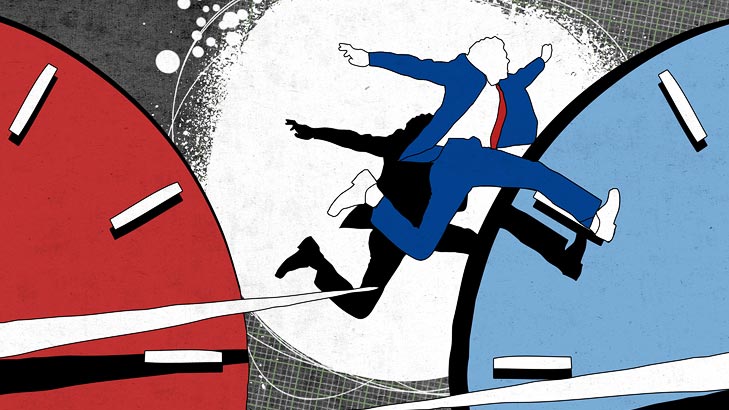Right moment to take the leap
Published on 14/07/2012
Understanding the property cycle is one of the essential keys to success.
Timing isn’t the be-all and end-all of investing. Still, in-depth analysis of the property cycle to identify the best time to buy will boost your chances of buying a property that will outperform the average.
In a depressed market, it’s easier to buy real estate at realistic prices because there’s more supply than demand. There is also heightened market transparency, which helps buyers spot value. In a boom market, almost any price a vendor puts on a property results in a sale, so the chance that you’ll pay an inflated price is much greater.
But when you buy isn’t nearly as important as what you buy. It’s foolhardy to try to make money out of a flat market by buying a property at below-market value if it’s in a suburb or area in which prices are set to fall.
Expert views on the role timing plays in shaping investment returns vary greatly. Most investment advisers who focus on achieving high capital growth and favour buying inner-city properties over other types of real estate believe timing is not overly important.
For them, the crucial factor is that investors buy a well-located property, with strong growth potential, at a good price.
Timing counts for a lot more if you’re trying to pinpoint regional areas and outlying suburbs with future growth potential.
An adviser and board member of the industry group Property Investment Professionals of Australia, Margaret Lomas, says regional and outer-suburban areas are in demand from tenants. ”These areas are going to lead the property-market recovery and present the best buying opportunities – in many cases, they will experience double the growth of the CBD markets,” she says.
Ms Lomas says market timing is the key for investors who want to achieve the greatest possible growth. Investors should identify an area on the verge of its boom and plan for a rise in prices during their period of ownership, she says.
A director of Wakelin Property Advisory, Paul Nugent, says people looking to buy in the inner suburbs should watch for a market tipping point following the recent cuts to the cash rate by the Reserve Bank.
”If this interest rate reduction cycle continues, at some moment a tipping point will be reached when the economic and property fundamentals become so compelling, it will overcome the current [market] inertia,” he says.
”Keep an eye on the gap between net rental yields and the standard variable mortgage rate. It is currently about 4 per cent, which is the long-term average. If this gap falls to 3 per cent as a result of falling interest rates and steady-to-rising rents, that will be a green-light signal that the property market is ‘good value’. This may be the tipping point for a more sustained recovery.”
Seasoned investors pay close attention to the property cycle and its key phases of boom, slump and recovery. Many operate on the basis that well-positioned houses and units will increase in value by about 100 per cent every 10 years. But they accept that the growth will be uneven, with high-growth years and average years.
A buyer’s advocate with Keyhole Property Investments, Melissa Opie, says a stabilisation – or flat – phase is an important fourth element of the property cycle. She says investors need to look for the snowball effect that drives property cycles. She says this most commonly occurs because of changes in consumer confidence.
”Once some people start buying, others jump on board,” she says. ”This is what leads to the increases. But prices can only go so high, at which point the bubble bursts and there’s a slump.”
Chris Tolhurst
